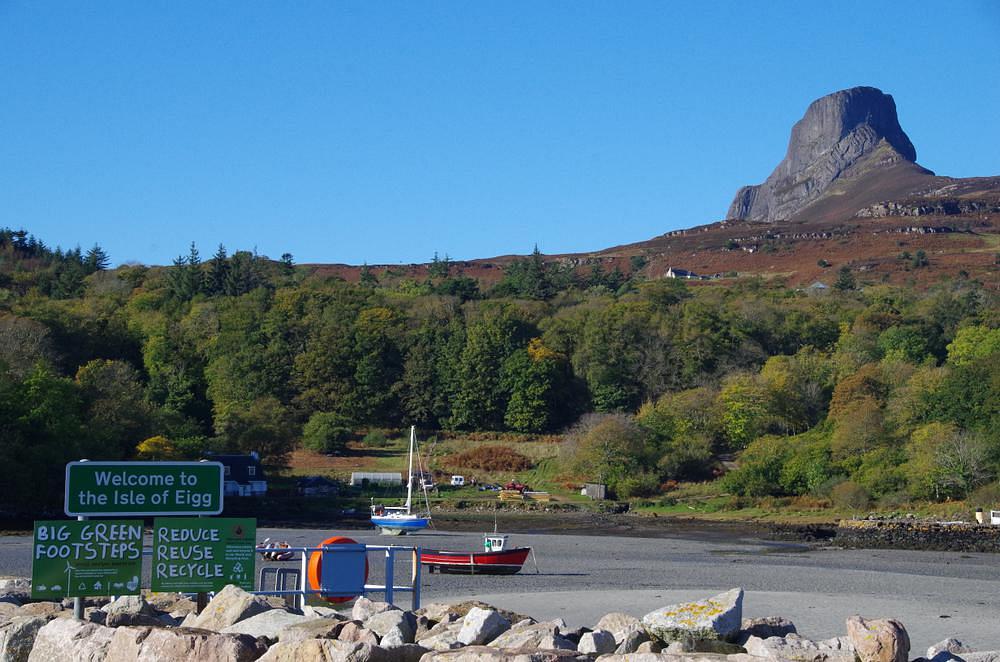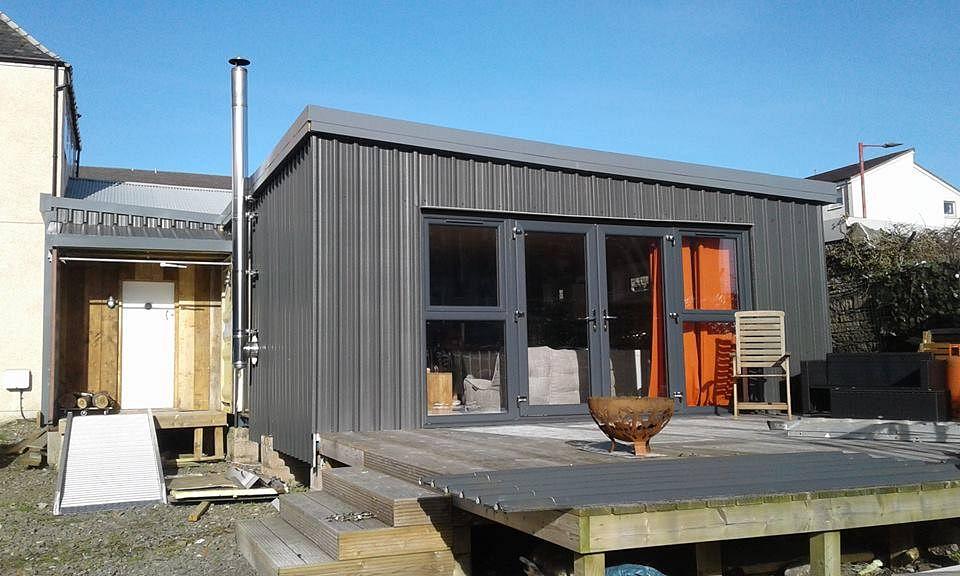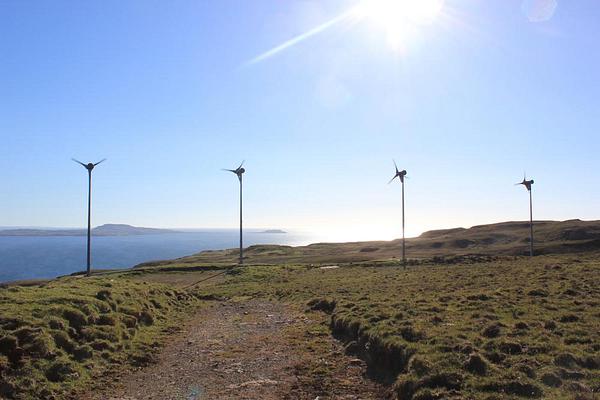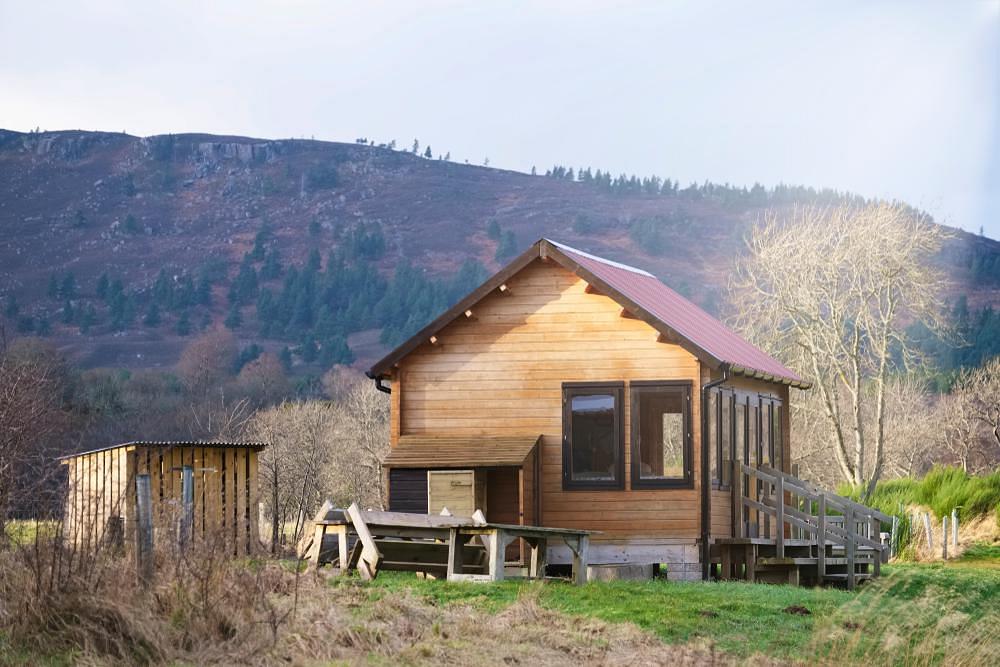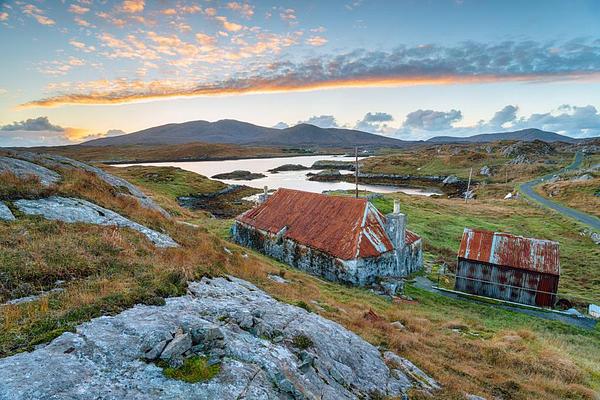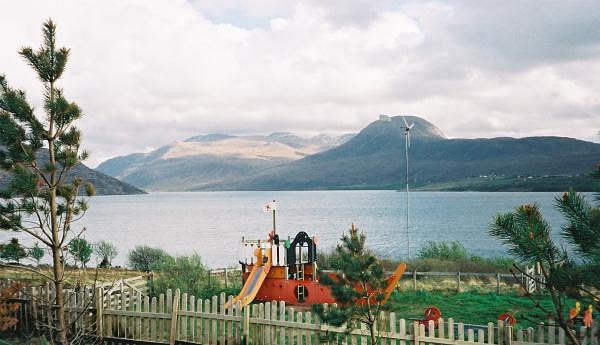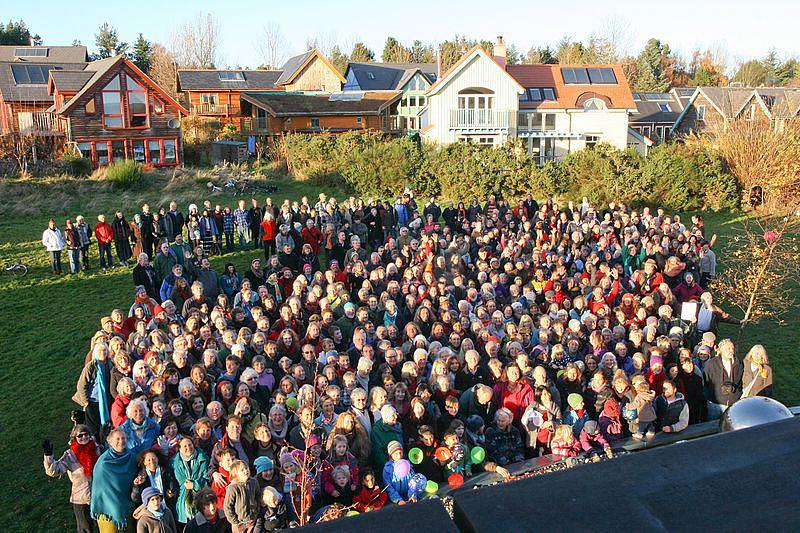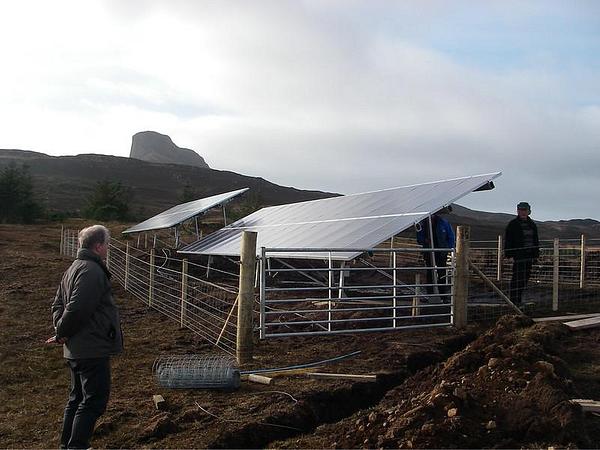.jpg)
Over three decades ago in Moray’s Findhorn Eco village, several permanent homes were laid down with perhaps the most Scottish material possible: recycled whisky barrels.
Borne out of ideas championed by the 1960s hippie movement, sustainable, off-grid communities like Findhorn (founded in 1962) were once a fringe movement, dismissed by some as for eccentrics and eco-warriors alone.
Yet over the past ten years, public interest in going off-the-grid has rapidly moved into the mainstream, with Google searches for the term “off-the-grid” climbing steadily year-on-year, dominated by users in Scotland and Wales.
The #offgrid tag has racked up 566k posts on Instagram, while #vanlife - referring to those travelling or living in a van - has accumulated an astonishing 6.6m posts - and counting.
Homes without mains electric or phone signal - which once might have garnered disgruntled reviews - are now advertised by the National Trust as ideal holiday getaways where guests can “unwind, de-stress and enjoy the peace and rejuvenating effects of wildlife”.
The burgeoning off-grid movement, however, is about more than temporary escape from the rat race. The housing crisis, the pressures of modern life and ever-growing concerns around the climate crisis have led thousands to seek out an alternative way of life. “Prices rise and people’s wages are still the same”, says off-gridder Caitlin Mooney. “It's why people are catching onto off-gridding”.
Thanks to its world-renowned landscapes, abundance of rural space and history of experimental communities like Findhorn, many have flocked to remote parts of Scotland in a bid to live off-grid; a term that today encompasses everything from entire communities to renovated vans and single-dwelling crofts.
Google searches for "off-the-grid" since 2004
Taking the leap isn’t as easy as just showing up and giving it a go, however. In spite of evidence that off-grid initiatives can regenerate rural areas, reduce carbon footprints and eliminate fuel poverty, Scotland’s rules, regulations and lawmakers are yet to catch up to what’s fast becoming a mainstream way of life - one that could form the blueprint for future sustainable communities across the globe.
How going off-grid gained traction
'You're working round the clock to pay for a house you’re never in'
Off-grid dwellings are far from new in Scotland, of course, with the tradition of “hutting” going back hundreds of years. For even longer, those in the most remote parts of Scotland were “off-grid” not as a lifestyle choice but a geographical necessity.
For well over a century, however, Scotland’s rural populations have been in decline. Year on year, young people have flocked to cities for the infrastructure, opportunities and culture that rural areas so often lack.
However, recent stats indicate that the tide might finally be turning. In a Highlands and Islands Enterprise survey from 2018, 46 per cent of respondents between the age of 15 and 30 expressed a commitment to staying in the Highlands and Islands - up from 36 per cent in the previous survey.
What’s more, the latest statistics from the Scottish Government show that between 2011 and 2017, accessible rural areas saw the greatest population increase of anywhere in Scotland. Following a decline between 2011 and 2016, even remote rural areas saw slight population growth between 2016 and 2017.
Off-grid homes around the world
Though the exact reasons for this change are diverse and hard to pin down, what’s evident is that city living is in many ways less desirable today than ever before - with rocketing living costs, air pollution and a lack of living space all contributing to a decreased quality of life for many.
It’s led some, like 25 year-old Caitlin Mooney, to seek out alternative ways of living. For just £3,000 - around 7x less than the average house deposit in Scotland - Caitlin bought a van in 2019 and is currently renovating it with the intention of making it her home.
The spiralling cost of rent, she says, was one of her primary motivations. Currently living in a rented flat in Paisley, she says she was tired of “spending £600 a month on rent and bills and things...half my wages”. Many people her age, she adds, feel trapped in the bleak scenario of “working round the clock to pay for a house [you’re] never in”.
The van currently has an electric hookup powering a mains socket and a long-lasting battery, as well as a gas-bottle-powered camping cooker. By the time she’s finished renovating it, she hopes to have all the utilities she needs in the van - including solar panels.
Yet off-grid living isn’t just a young person’s fad. Catherine Watt, a 63 year-old printmaker, has lived on an off-grid croft in the far north of Scotland with her partner David for the past 23 years. They rely on a windmill and backup generator for electricity and an uphill ditch for water, burning peat to keep warm in the colder weather.
Though she admits that their way of life can be difficult - “if you have a problem with something you just have to get on with it yourself” - she says there’s not a day herself and David don't “go out and think, wow, what a place this is”.
In spite of their situations differing on many counts, both Caitlin and Catherine echo each other when it comes to one of the huge benefits of living off-grid: freedom.
“Our whole way of life, it's just fantastic”, says Catherine, adding that herself and her partner feel they “have enormous freedom to do as we like”.
Tech advances
'It’s easier to live off-grid today'
Catherine also observes that it’s become much easier to go off-grid than it was when she was first starting out - contributing to a growth in the community.
Thanks to advances in green technology and knowledge-sharing online, rural living no longer has to mean being totally cut off from the world.
Tristan Partridge, who studied the Isle of Eigg’s experimental “micro-grid” energy system, agrees with this theory, citing cheaper tech and the internet as the main drivers of the off-grid movement in recent years:
“[Off-grid living hasn’t become easier] because of changes in legislation. I think it is perhaps easier to live off-grid today because of how much one can learn from other people living off-grid through the internet… Also, technology is more affordable today - small, battery-based solar-power systems can today be bought for a tiny fraction of what they would have cost, say, 20 years ago”.
The internet has also facilitated an explosion in the numbers of freelancers in the workforce, alongside increasing numbers of companies offering work-from-home options for employees.
With the flexibility of only needing an internet connection to earn money, it’s freed up thousands from the traditional obligations of working from a physical place in an urban centre.
Even for those lacking practical skills, entire businesses offering ready-made off-grid homes and energy installations have sprung up across the country.
James Steel of Helensburgh is one entrepreneur cashing in on the growing demand. He’s heading up a thriving business building shipping container homes at a fraction of the cost of buying a standard one - kitted out with all the off-grid essentials:
“Most of our off grid units will have a wood burning stove, LPG and solar power fitted as standard, together with a caravan-style hookup for mains electricity or generator power. It is always important to have a variety of off grid power sources just in case!”
On a larger scale, harnessing these technologies has enabled certain remote Scottish communities to build entire decentralised energy systems - and reduce their carbon footprint in the process.
It’s thanks to the Scottish Highlands and Islands’ “isolated geography, rise of community buy-outs and growing support for sustainability initiatives”, in fact, that Scotland was chosen along with India and Papua New Guinea as the subject of a University of Edinburgh research project looking at “Life off the Grid” between 2013 and 2015.
Tristan, who looked at the Isle of Eigg’s “micro-grid” as part of the project, explains that the local system - powered by wind, water and solar energy - made 24-hour power available for the first time while simultaneously reducing carbon emissions:
“It [the energy system] still requires some diesel to be shipped over from the mainland, but much less than before the renewables-based micro-grid was constructed - when almost every individual house had their own diesel-powered generator”.
Problems and roadblocks
“Scotland is an interesting site to study”
Especially in comparison with its southern neighbour, Scotland has relatively lax laws when it comes to the land, with right to roam rules allowing wild camping and access to most rural areas.
Crofts - small, often remote, units of arable agricultural land - have supported working off-grid dwellings, while “alternative” communities like Findhorn have - largely - been given the freedom to operate as they wish.
In 2017, the “A Thousand Huts” campaign was successful in lobbying the Scottish government to exempt huts (small recreational dwellings, usually off-grid) from standard building regulations. The move has since revived “hutting” in Scotland - the historic tradition of city dwellers escaping to the country for some rest and respite in their hut.
Yet while the Scottish government might advocate for low-impact, off-grid lifestyles in theory, the material reality is often inflexible.
Annabel Pinker, who wrote an academic paper on energy decentralisation in Scotland, said the country was an “interesting site to study” for precisely this reason, suggesting that the government’s “extensive financial support for locally-led energy schemes...and the ambitiousness of its emissions targets” contradicts the “inflexibility of its material and regulatory infrastructures”.
According to Karen Grant, of the A Thousand Huts campaign, “the subject of small, low impact permanent dwellings regularly comes up in conversations about huts, and there is a strong interest in that subject from sections of the general public.”
In spite of this, the legislation around huts is clear cut: huts are to be “used intermittently as recreational accommodation” only. A 2019 Stirling Council document outlining the policy used even stronger language, outlining that:
“There also continues to be pressure in some areas to use chalets for permanent residential occupation. These pressures will be resisted, and chalets must not be used for residential purposes.”
When approached for their policy on off-grid living, a government spokesperson responded that:
“The Planning (Scotland) Act 2019 introduced a number of requirements to support the resettlement of rural areas which have become depopulated. The issue of “off-grid” living was not raised in the context of the Planning Bill.”
Access to land for building off-grid homes and communities too remains challenging. Crofts were once a cheap way to purchase and work the land, supporting numerous off-grid dwellings and communities.
Yet today, crofts are increasingly difficult to come by, and often just as expensive as ordinary land. With purchasers required to stump up 100 per cent of the funds to buy a croft, many young people are shut out from acquiring one.
It’s one of the reasons why a generational gap exists even within alternative lifestyle models - with younger people flocking to vans as one of the most affordable off-grid options.
Scotland’s off-grid communities have almost invariably sprung from community-owned land, yet in spite of then-first minister Alex Salmond’s 2013 aim to have one million acres of Scottish land in community hands by 2020, it was estimated in 2019 that just 560,000 acres had been transferred.
The future
“Policymakers see it as too weird to support off-grid initiatives”
To many, the resistance and ambivalence towards this growing movement seems illogical given the severity of the climate crisis and the environmental benefits of off-grid living.
In the off-grid community of Findhorn, where 90 per cent of electricity is generated by wind turbines, individual carbon footprint is half the UK average.
Going off-grid doesn't have to mean sacrifice either. On Eigg, where residents once relied on diesel generators for a couple of hours of power, the island's renewable energy sources now provide clean electricity 24 hours a day, with limits and usage decided by the residents themselves.
Aside from the environmental benefits, off-grid communities and set-ups also have the capacity to repopulate rural areas, eliminate fuel poverty and dramatically reduce living costs.
Nick Rosen, the founder of off-grid.net - a site for off-gridders to communicate and share knowledge - wrote in the Guardian in 2014 that “Policymakers see it as too weird or fringe to support off-grid initiatives. But they are being timid.”
In his eyes, the growing appetite for off-grid lifestyles is unstoppable - with technology making the choice more accessible, while economic and social factors make it increasingly desirable.
In 2018, consulting company Accenture forecasted that by 2035, at least 12 per cent of US households and 11 per cent of European households would be living off-grid.
Tristan Partridge also believes that the off-grid movement will continue to gain traction in spite of various legislation and policy presenting roadblocks along the way:
“I see some evidence of [off-grid] localisation efforts spreading — but more as a result of social movements and community organizing than government action...This kind of community-led change is how social change tends to happen everywhere”.
The ways in which he sees this happening are multifarious, from new communities in imitation of Eigg to off-gridders on houseboats “sharing a ‘mooring’ and having shared facilities, insurance... perhaps even access to shared micro-grid electricity too.”
As the climate crisis accelerates, he predicts that the benefits of this way of life will eventually become too loud to ignore, with governments switching their thinking from fix-all “silver bullet” solutions to “supporting many, diverse, localized initiatives that are already doing the work of creating more sustainable, just, and liveable futures for everyone.”
The benefits are not all in sustainability either. Through his work, Tristan has seen for himself how a shift towards off-grid living could heal the divisions present in so many communities today by encouraging kinder social relations between people:
“I think any space that fosters a more conscientious and connected approach to social and ecological relations - which off-grid and community-based living tends to do - helps strengthen ties of respect and reciprocity.”
What's more, he predicts that the changes wrought by this new way of living will be felt far beyond the community's own borders:
“Taken together, I think the changes introduced by off-grid and micro-grid living not only benefit those living in those spaces but also ripple across a region or country as a whole.”
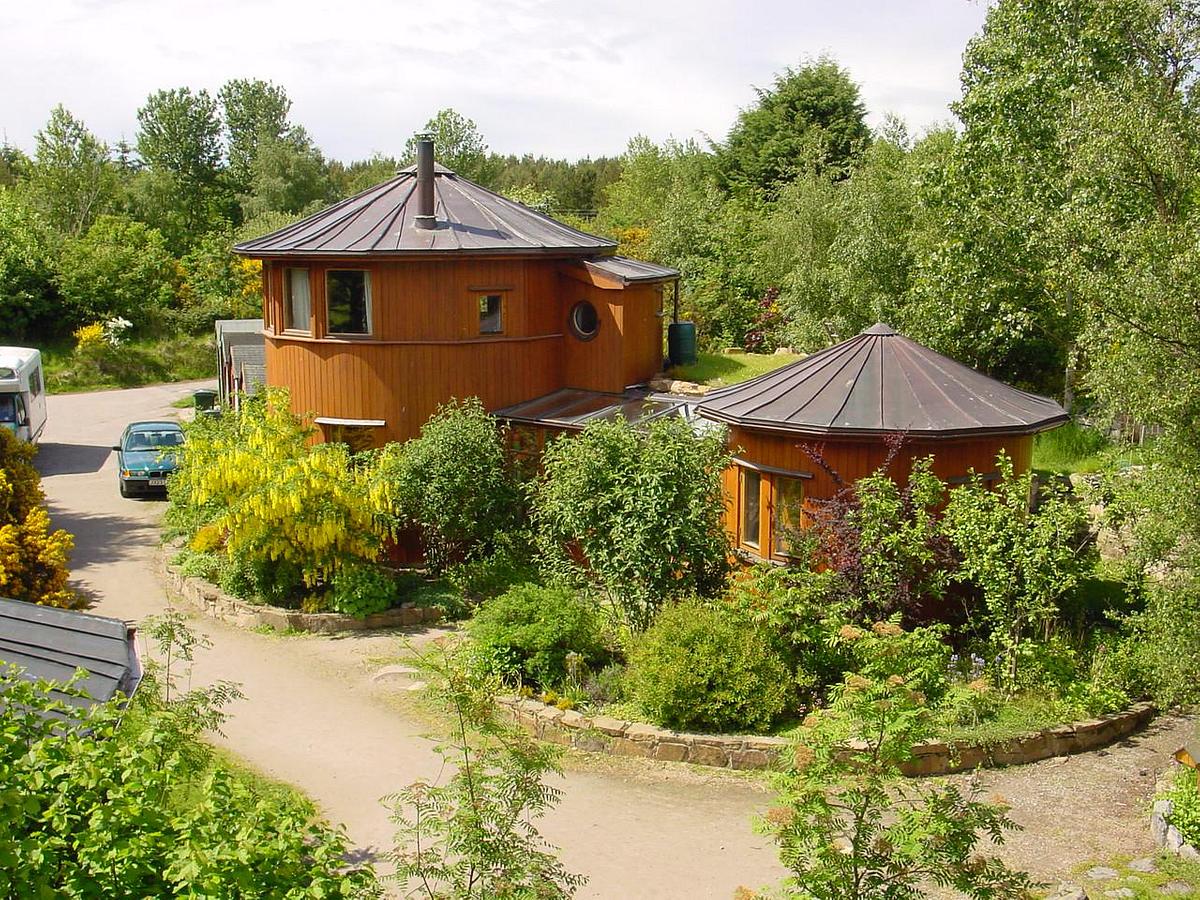

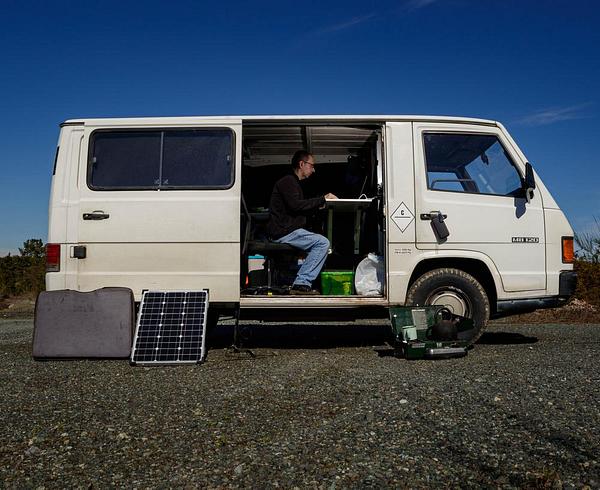
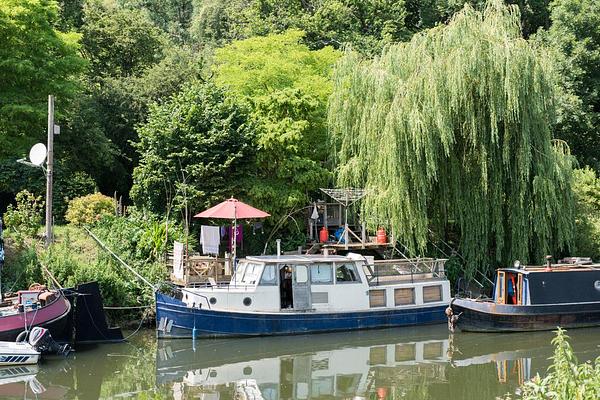
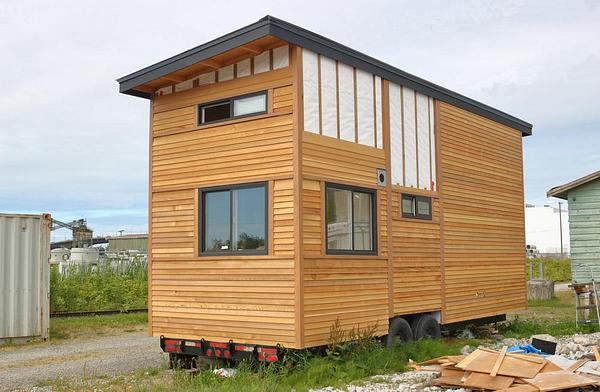

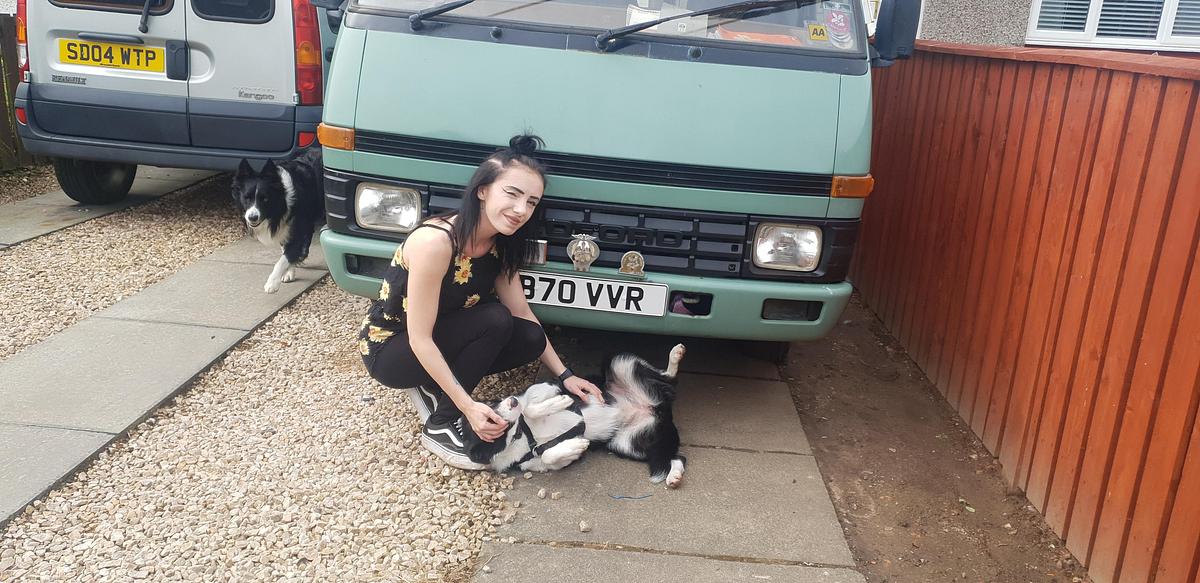
.JPG)
